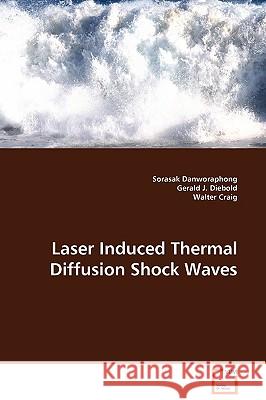Laser Induced Thermal Diffusion Shock Waves » książka
Laser Induced Thermal Diffusion Shock Waves
ISBN-13: 9783639094824 / Angielski / Miękka / 2008 / 100 str.
When two phase coherent laser beams are crossed at an angle, the electric fields of the beams produce a sinusoidal interference pattern. Partial absorption of the electric fields in a colloidal sample creates a sinusoidal temperature field. The temperature gradient then causes production of concentration gradient in the sample, known as the Ludwig-Soret effect or thermal diffusion. Solutions to nonlinear partial differential equations that describe the effect show that shock waves analogous to fluid shock waves are produced. A mathematical relation between the shock speed and the density fraction of one component, analogous to the well-known Rankine-Hugoniot equations, is derived. Self-diffraction and imaging experiments show shock-like behavior in colloidal systems governed by the thermal diffusion.
When two phase coherent laser beams are crossed at an angle, the electric fields of the beams produce a sinusoidal interference pattern. Partial absorption of the electric fields in a colloidal sample creates a sinusoidal temperature field. The temperature gradient then causes production of concentration gradient in the sample, known as the Ludwig-Soret effect or thermal diffusion. Solutions to nonlinear partial differential equations that describe the effect show that shock waves analogous to fluid shock waves are produced. A mathematical relation between the shock speed and the density fraction of one component, analogous to the well-known Rankine-Hugoniot equations, is derived. Self-diffraction and imaging experiments show shock-like behavior in colloidal systems governed by the thermal diffusion.











